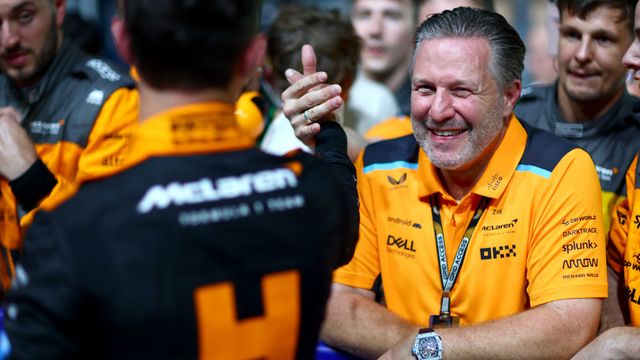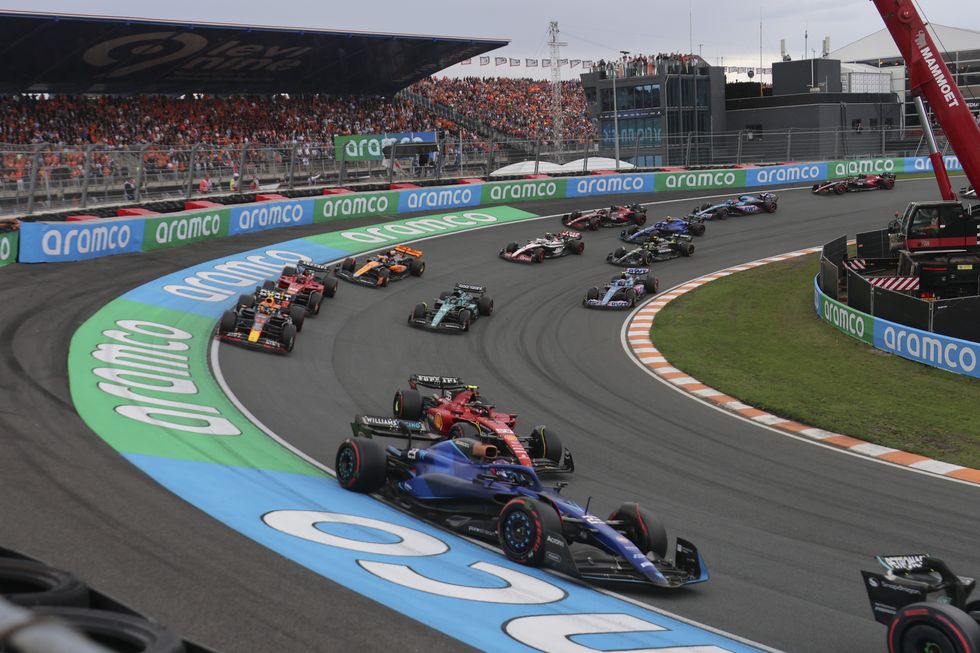Formula 1 has wanted the American market, it has wanted more American races, and the sport itself has been increasingly Americanized in recent years.
Now, a big-time American racing team, backed by an American car giant, wants to join the party, but Formula 1 isn’t keen on handing out any invitations.
What Is the Situation?
First, some brief background, for those who have not been following every detail.
Michael Andretti, who raced a partial season for McLaren in 1993, has been striving to enter Formula 1 in recent years. He came close to a takeover of Sauber—a team currently competing under the Alfa Romeo brand—in late 2021, but that deal collapsed over control issues once financial terms had been agreed.
Andretti announced plans in February 2022 to form its own team and behind-the-scenes was lobbying existing teams while putting the required infrastructure in place.
The FIA opened a process for prospective new teams in January 2023 and Andretti swiftly publicly formalized its plans, while revealing that it had gotten General Motors on board, through its Cadillac brand, as a partner, though not as a power unit manufacturer.
At the start of October, the FIA announced that Andretti had met the criteria it set for the applicants and had passed on the bid to Formula 1. Andretti was the only one of four applicants to reach the FIA’s threshold.
Formula 1, led by CEO Stefano Domenicali, will now discuss commercial matters with Andretti and the final process is expected to run into early 2024.
How Has Andretti’s FIA Approval Been Received?
Formula 1 teams, with the possible exception being Andretti’s ally Zak Brown’s McLaren team and expected power unit partner Alpine, are not in favor of the application being approved by Formula 1.
It is important to distinguish that this is not an attack on Andretti, or an anti-Andretti agenda, but on the presence of an 11th team, and the reasons are purely financial.
The existing teams are protecting their interests and assets, as the introduction of another team will dilute the prize fund and lessen the value of their own teams.
The revenue and prize money, hugely important for Formula 1 teams, would have to be split 11 rather than 10 ways should a new team come into the series. Because of this and to soften that hit to the existing teams, Formula 1 has an anti-dilution fee—in effect a new-team entry fee—set at $200 million under the current Concorde Agreement. That money would be shared between the existing 10 teams.
Teams, however, argue that Formula 1’s growth since that Concorde Agreement means a one-off lump sum of $200 million would not cover their losses from splitting the pie 11 ways.
There have been attempts to significantly raise this fee for the next Concorde Agreement, set to be introduced in 2026. Andretti, its detractors have said, must pay a high rate while also presenting arguments that it will be an asset that can help increase the value of the F1 pie by a minimum 10% to make up for potential lost revenue to the other teams.
“All of a sudden if you lose 10%, you have to find it somewhere else,” said Haas F1 team principal Guenther Steiner.
There is a secondary factor at play, too.
The value of Formula 1 teams has risen in recent years, boosted by its growth in popularity, the presence of a cost cap, and the shift towards a franchise model.
There are teams who would sell at the right price—even if they say they wouldn’t—and they don’t want any value being knocked off their asset by the presence of an 11th entity. It is understood one owner has rejected a 10-figure bid for their team.
Very few in senior positions are keen to see someone pay $200 million to enter and immediately have an entity worth at least three times that.
Do the Teams Have a Point?
Is it pure greed, or is the financial stance justified? As ever, the truth rests somewhere in the middle.
Of course, each team has a vested interest, protecting the value of a commodity, and ensuring there is no business threat. And several team bosses are correct in pointing to Formula 1’s recent history.
“We have to keep in mind that three or four years ago we had almost half of the grid quite close to the bankruptcy and we have to avoid to be arrogant,” said Ferrari boss Fred Vasseur.
The Manor team collapsed pre-2017, having slipped to 11th place in the 2016 standings which was then ruinous under Formula 1’s old financial model. Then, Force India entered administration mid-2018 and was rescued by Lawrence Stroll. The team now competes as Aston Martin.
The pandemic also plunged several teams into crises, with a few turning off the financial taps until the uncertainty cleared. Williams was sold mid-2020 to current owners and U.S.-based Dorilton Capital.
“We are stable, but it’s not like we are making hundreds of millions of profits. We are still trying to get our budgets together, work on the budget cap, all that stuff,” said Steiner. “I remember sitting in these video meetings when the pandemic hit, and four teams were ‘are we here next year or not.’
“We were all struggling, trying to keep alive, and a lot of people and a lot of team owners have put their money in it to stay alive and to make F1 what it is now. I think there is value to that as well.
“Why would we dilute what we’ve got just to get somebody else a team when F1 is booming? Why would we make it weaker now if something comes up again, we need to be as strong as we can, the 10 teams that are here, who got through the hard times?”
What About Other Arguments?
The financial arguments proposed by teams are compelling, and ensuring the long-term health of the 10 teams is not to be dismissed, even if some of the excuses seem to be a bit of a reach.
Here are a few other points that are less than convincing:
There’s not enough space for more than 10 teams at some current venues. The Netherlands’ Zandvoort is often cited due to its relatively compact pits and paddock.
To that, it is worth noting that it is a requirement under FIA rules for each Formula 1 circuit to have sufficient space for up to 24 competitors. Besides, at several circuits there are spare garages in the pit lane that are used for commercial purposes by Formula 1 and Pirelli. At a couple races this year, the fictional ‘Apx GP’ team has even occupied a garage while it captures footage for the upcoming Hollywood movie.
A congested Q1 session at short tracks has also been cited as a concern, with impeding and occasional close-calls an issue in places such as the Red Bull Ring or Monaco.
But both of these arguments fall completely flat as Formula 1 had 11 teams as recently as 2016, while other categories cope just fine on- and off-track with field of more than 20 cars.
It is also important to note that while the teams have a voice, and influence, they do not have any vote when it comes to the entry of a prospective team.
What Do the Fans Want?
Since Liberty Media acquired Formula 1 in 2017, it has been eager to place the fan at the forefront of the experience.
The work the championship has done, in conjunction with teams and race promoters, has been highly successful, particularly in diversifying Formula 1’s fanbase.
But through the process of the application process, the wishes of fans have often fallen by the wayside. The echo chamber of the Internet can be a dangerous place in which to draw conclusions, but there seems to be overwhelming support for an additional team, particularly one of the stature of Andretti.
An 11th team would not only put two more cars into the mix, but it would provide employment for hundreds of mechanics, engineers and other specialists, at a time where some existing teams have had to downsize to meet the cost cap. It would also be an opportunity for two more drivers, ostensibly create more storylines, and more racing.
“Everything I’ve seen so far, plus I think the partners they have and the name, they have shown they are a professional team,” said World Champion Max Verstappen. “It would be I think nice, because I think it gives more opportunities for the drivers’ side. But I can understand from the teams’ side, they don’t want it. It’s a tricky one, it’s a tough one.”
When Would a New Team Be Begin Racing?
Formula 1 is in the longest period of grid stability in its history, with no new teams since Haas’ arrival in 2016. That was a year before Liberty Media’s arrival as owner, and the same 10 entities in their seventh year of forming the lineup.
It has begged the question that if Formula 1 does close out Andretti—an American racing powerhouse increasingly expanding onto a global stage—with backing from General Motors, then does any new team, ever, stand a chance of joining the championship?
One solution may be for the long-term impact of the current financial regulations to play out—and then review the composition of the grid later in the 2020s.
“I think the addition of an 11th team is a sensible thing, but only at a point where the 10th team on the grid is financially stable,” said Williams team principal James Vowles.
Perhaps the argument should not be ‘what can Andretti bring,’ but rather, ‘isn’t it great to see Andretti so eager to join our championship. Oh, and they’ve attracted GM, too.’
This is where Formula 1 has been smart in sculpting the narrative over a prolonged period with its lukewarm responses to the notion of more teams. This is part of Andretti becoming a pawn within the political battle being played out between Formula 1 and the FIA.
The relationship between the parties has been cordial at best in recent years. The FIA opened the process of entertaining bids from prospective new teams while fully aware of Formula 1’s hesitance to any new team. Once that happened, the wheels were put in motion, and with Andretti passing all of the FIA’s checks it had no option but to pass the situation to Formula 1.
“We are not a service provider,” said FIA president Mohammed Ben Sulayem to Reuters in Qatar. “We own the championship. We leased it, we are the landlord. So that has to be respected also. My intention was never to embarrass or to put someone in a corner, Liberty or FOM. I am here for the spirit of the sport.”
But the lines have been drawn.
The FIA wants another team. Formula 1 is unconvinced. If Andretti wants in it must, somehow, change Formula 1’s mind.
Read the full article here





